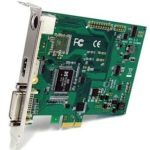 There are all kinds of reasons why you might want to capture footage from your games consoles. Maybe you’re an expert player and want to record your perfect run to show off on your Youtube channel. Maybe you’re practising a game and want to see where you went wrong. Maybe you just want to review a game, or simply save gameplay from your favourite games for posterity. Whatever the reason, owning a good quality capture card can be both useful and fun. There are several solutions on the market, from the super cheap composite only solutions up to the more professional cards like the Blackmagic Intensity Pro. In amongst these capture solutions there’s a card from Micomsoft called the SC-500N1. This card was much sought after by gamers due to it’s ability to capture any kind of input from 240p (retro consoles like SNES and Megadrive) right the way up to 720p/60 (Xbox 360) or 1080p/30. This makes it ideal for capturing anything from Megadrive to Xbox 360. The only barrier is the price. At around £250/$395 to import one from Japan, the card is out of the price range of many gamers.
There are all kinds of reasons why you might want to capture footage from your games consoles. Maybe you’re an expert player and want to record your perfect run to show off on your Youtube channel. Maybe you’re practising a game and want to see where you went wrong. Maybe you just want to review a game, or simply save gameplay from your favourite games for posterity. Whatever the reason, owning a good quality capture card can be both useful and fun. There are several solutions on the market, from the super cheap composite only solutions up to the more professional cards like the Blackmagic Intensity Pro. In amongst these capture solutions there’s a card from Micomsoft called the SC-500N1. This card was much sought after by gamers due to it’s ability to capture any kind of input from 240p (retro consoles like SNES and Megadrive) right the way up to 720p/60 (Xbox 360) or 1080p/30. This makes it ideal for capturing anything from Megadrive to Xbox 360. The only barrier is the price. At around £250/$395 to import one from Japan, the card is out of the price range of many gamers.
As luck would have it however, the SC-500N1 wasn’t a custom hardware design by Micomsoft, merely an off the shelf card with some custom Micomsoft software. The StarTech PEXHDCAP capture card turned out to be the very same hardware, just with re-branded packaging. For a much more reasonable price of just under £100, this card offers exactly the same functionality as the SC-500N1. The StarTech branded card is the one we’re reviewing here, but the majority of the comments are valid for the Micomsoft card too (except for the price of course).
The Startech card ships in a diminutive white box with just the StarTech.com logo and a picture of the card on the front. Like most StarTech products there’s just the basics included with the card. There’s the breakout cable for the component video and analogue audio connector, a DVI to VGA adapter for the DVI-I port and a driver CD.
Fitting the card is easy too, the card is a PCI Express x1 device, it’s not particularly long so fitting it inside a PC is generally pretty easy. Of course you will need a desktop PC, so laptop owners are out of luck this time. Once the card is installed, you can use the drivers from the CD or simply download the latest ones from StarTech (or Micomsoft). Downloading drivers is usually preferable in this internet connected age as it ensures you get the very latest versions.
Connectivity
For a capture card under £100 the PEXHDCAP has excellent connectivity options. There’s a HDMI port and a DVI-I port that accepts both VGA and DVI connections. Using a breakout cable it’s also possible to attach a component (YPbPr) connection too. This range of connectors pretty much covers any modern source you might want to connect. For your retro consoles, you will need a sync splitter/stripper to convert from RGB SCART to RGBHV. The Sync Strike works perfectly for this, converting a SCART connection into a 15 pin RGBHV (VGA style) connector. Plug this into the DVI-I connector using the VGA adaptor and 240p sources are recognised perfectly.
There are a few caveats of course. 1080p capture is limited to 24fps, making it unsuitable for capturing videogames. 1080p/60 is simply too much bandwidth for a PCI express 1x card to handle. Of course, the card cannot decode HDCP protected video. For videogame capture this is usually only a problem with the PS3, thanks to Sony’s insistence on putting DRM on everything (except PSN account details it seems). To get around this limitation you can try to obtain a HDCP stripper, these are rare due to copyright laws, but the HD-Fury series which converts HDMI to VGA will work, albeit at the cost of a tiny bit of picture quality usually.
If you intend to capture HDMI, for instance from the 360, remember that the card cannot decode Dolby Digital (or indeed any audio other than digital stereo). This means you’ll need to sacrifice surround sound, or get some kind of external decoder you can put between the 360’s input and the capture card.
Planning your setup
If you’re on a budget, it is possible to play and record from your PC, using the same monitor. Input lag times while doing this vary between 14ms and 30ms. Of course you need to add your monitors input lag into this too, but for many games that makes for a quite acceptable amount of lag. According to tests that other gamers have conducted, the VideoKeeper capture software has the least amount of input lag, while AmaRec seems to have the most. We’ll discuss capture software in more detail in a moment.
Alternatively, there are several ways to split a signal between the capture card and your TV or video processor. HDMI and VGA splitters are widely available, component and SCART splitters are also available and there are several switches for both component and SCART that offer two outputs rather than one. With this kind of setup you can game on your regular screen and simply use the PC’s monitor to start the recordings.
Choosing capture software and making your first capture
StarTech do include some capture software with the card. StarTech StreamCatcher is actually quite a versatile capture program, with the option to record to AVI (h264) or MP4. StreamCatcher will accept 240p signals too, though they will not be automatically line-doubled. Without the automatic line doubling, most video playback programs will display 240p captures with the wrong pixel aspect ratio. StreamCatcher even has the option to schedule a recording and the facility for plug-in filters, though currently only one (a black and white filter) is available.
Alternatively, it’s possible to use the Micomsoft produced VideoKeeper program instead. VideoKeeper is more designed for videogame capture. It’s a bare bones application that only records in h264 format. Any 240p sources recorded with VideoKeeper are automatically line doubled. This means they will display correctly on a PC monitor. The program is very minimal, there’s not even an option to change picture brightness.
Going beyond what’s possible with the bundled software, AmaRec is an excellent capture program that allows you to fine tune all the options to do with capture. You can choose your own codecs, optionally line-double the input or leave it as raw 240p and even record voice over commentaries. You can use whichever program suits your needs best. You can easily have all three installed at once, but only one can be running at any one time.
A real all-rounder
Unlike other capture cards, such as the Blackmagic range, the PEXHDCAP captures pretty much anything you can throw at it. As well as feeding the card a signal from all my 240p consoles, including often problematic systems like the PC Engine, I also tried capturing directly from the XRGB3 and XRGB Frame Meister and the DVDO Edge. The PEXHDCAP handled them all flawlessly, regardless of frame rate locks and other things that can trip up typical capture cards. Even unusual signal types like 50hz VGA worked without a problem.
Quality
Although like most capture cards, the card is limited to capturing in the YUV colour space (i.e not full RGB) the quality of the captures is still excellent. Analogue sources can be prone to noise (as always) but no more so than with other devices. Dialing back the brightness a couple of notches on some sources may be necessary to prevent noisy grey/near black areas. On some 240p/288p sources there’s the tiniest amount of colour shift, this is largely corrected by the capture software (this correction must be enabled manually in AmaRec). If you look hard enough you may still be able to see it in your final captures but its virtually impossible to spot usually.
Example capture
No capture card review is complete without some screen shots. Below you can see some captured screen shots from 240p RGB, 480p component and 640×480 VGA sources.
Top – PC Engine, playing Tiger Heli, Middle – Sega Saturn, the intro from Sengoku Blade, Bottom – Atari Jaguar – Tempest 2000 on a PAL console.
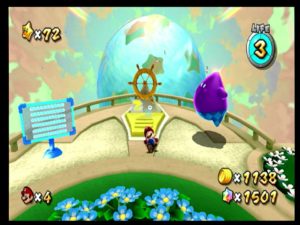
Top – Raw screenshot from the Dreamcast in VGA. Bottom – From the Wii in 480p component. Click each screen shot for a bigger version.
For some examples of video capture quality, you can go to my Youtube channel. Of course, Youtube videos are downgraded by Youtube’s own compression. Because of this I’ve put a couple of short, uncompressed captures here for you to download.
Captured using AmaRec and the AMV2MT codec.
Captured using AmaRec and the Lagarith codec, converted to x264 in Virtualdub.
Power problems
One possible fly in the ointment with the card and something that is not immediacy noticeable is how the card affects the power management of your computers CPU. When you install and run the card, it switches your CPU to full power mode. This is done intentionally, so that the full grunt of your CPU is available for capturing. The problem is that the CPU is never returned to standard, power saving mode afterwards. This can result in your computer running hot and also drawing and wasting more power. If you are running on a battery or have a UPS attached, this extra drain could be somewhat problematic. It is possible to manually change the power settings back again, but of course they will revert once again the next time you capture.
Conclusions
This capture card is a fantastic, low cost solution for anyone looking to add video capture to their gaming setup. While getting the best quality captures requires a little more effort, the software provided out of the box may be more than adequate for many people. Cards like the Blackmagic may have slightly better quality, but getting them to work with 240p sources requires a video processor such as the DVDO Edge between your retro console and your capture card. If you want RGB quality captures without breaking the bank, this is the card to get, just watch out for the power issues.
Back from StarTech PEXHDCAP review to Home Page

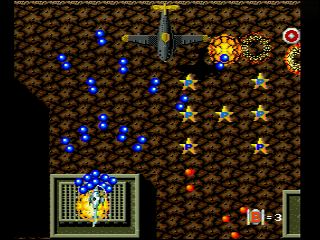

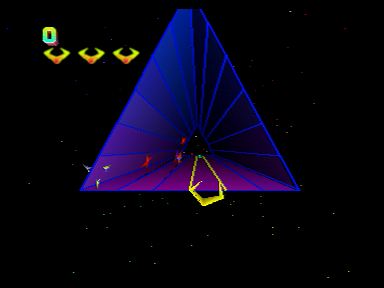
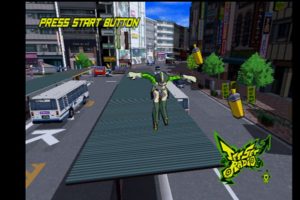

I was looking for a good 240p capture solution and found your article. I ended up finding the card on eBay and got it for $80 looking forward to trying it out!